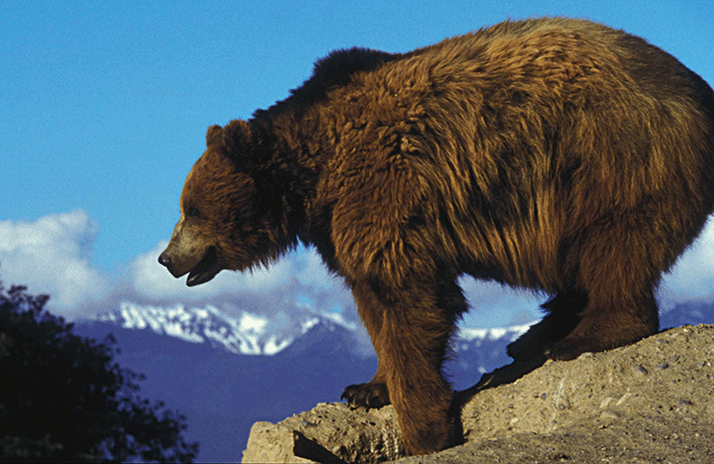
Grizzly bears have a somewhat elusive lifestyle, but researchers at the Washington State University Bear Research, Education and Conservation Center, hope that laser ablation inductively coupled plasma mass spectrometry (LA-ICP-MS, see page 20 for more) could plug some of the knowledge gaps as far as diet goes. Some analytical methods, such as stable isotope analysis of hair, are already used to study a bear’s reliance on salmon and other foods, alongside traditional observational analysis, but the group believe that LA-ICP-MS could have a much bigger impact.
As LA-ICP-MS had not been previously used on animal hair, the researchers had to fine tune and adjust the laser settings for optimal analysis. Appropriate internal and reference material standards were also required. Jennie Christensen, an environmental scientist at Stantec who collaborated on the study (1) explains, “For internal standards, we opted for sulphur due to its high and consistent signal across the length of the hair. For reference materials, we initially attempted to produce a pressed pellet of human hair reference material, but they were friable and created dust, contaminating the analyses.” The group settled on DOLT 2 (dogfish liver powder pressed into a pellet) a well established reference material that provided consistent results for the elements of interest. “Where we deviated from a conventional approach to LA-ICP-MS was in our quality assurance/quality control,” says Christensen. “Though we conducted the typical background runs, reference standard runs, and internal standards, we also included some additional tests for quality to ensure accurateness and effectiveness of our approach and calculations.” The results? Christensen confirmed that hair certainly does record a highly accurate and detailed account of dietary intake of certain metals, most prominently copper, zinc and mercury. “The information provided by LA-ICP-MS was temporally more detailed than conventional analysis using blood sampling,” says Christensen. She adds that it is also immeasurably safer for the researcher, who no longer requires actual access to the bear; hair is easy to obtain through hair-snagging programs or collection from “rubbing trees”. The analysis also highlighted some potentially worrying conclusions about dietary impact on bear health. “We were able to ascertain improved risk assessment for bears that may have access to metal-laden foods. In our study, the fish had higher concentrations of mercury than other terrestrial-borne foods and it was easy to see when and how much fish individual bears consumed,” says Christensen. “While conventional analysis and past research has never identified any mercury-associated health risks to salmon-eating grizzly bears, using LA-ICP-MS to get a more accurate temporal record of exposure clearly indicates that some bears exceeded toxicity thresholds for mercury for up to 76 consecutive days.” Monitoring trace elements in wildlife using LA-ICP-MS is in its infancy. And although this study is useful for understanding exposure to metals in grizzly bears, Christensen says that every wildlife species will require modification of the approach. But the researchers have already been evaluating the technique for a few other mammalian species and are also expanding the scope to humans – as a non-invasive technique to evaluate exposure to various metals, deficiencies in essential elements and potential health risks. Christensen is also evaluating the use of other non-invasively collected tissues for biomonitoring metal exposure and health.
Click here to read more on Hair analysis...
References
- M Noël, et al., “Using laser ablation inductively coupled plasma mass spectrometry (LA-ICP-MS) to characterize copper, zinc and mercury along grizzly bear hair providing estimate of diet,” Science of The Total Environment, 529 (1), (2015). DOI: 10.1016/j.scitotenv.2015.05.004




